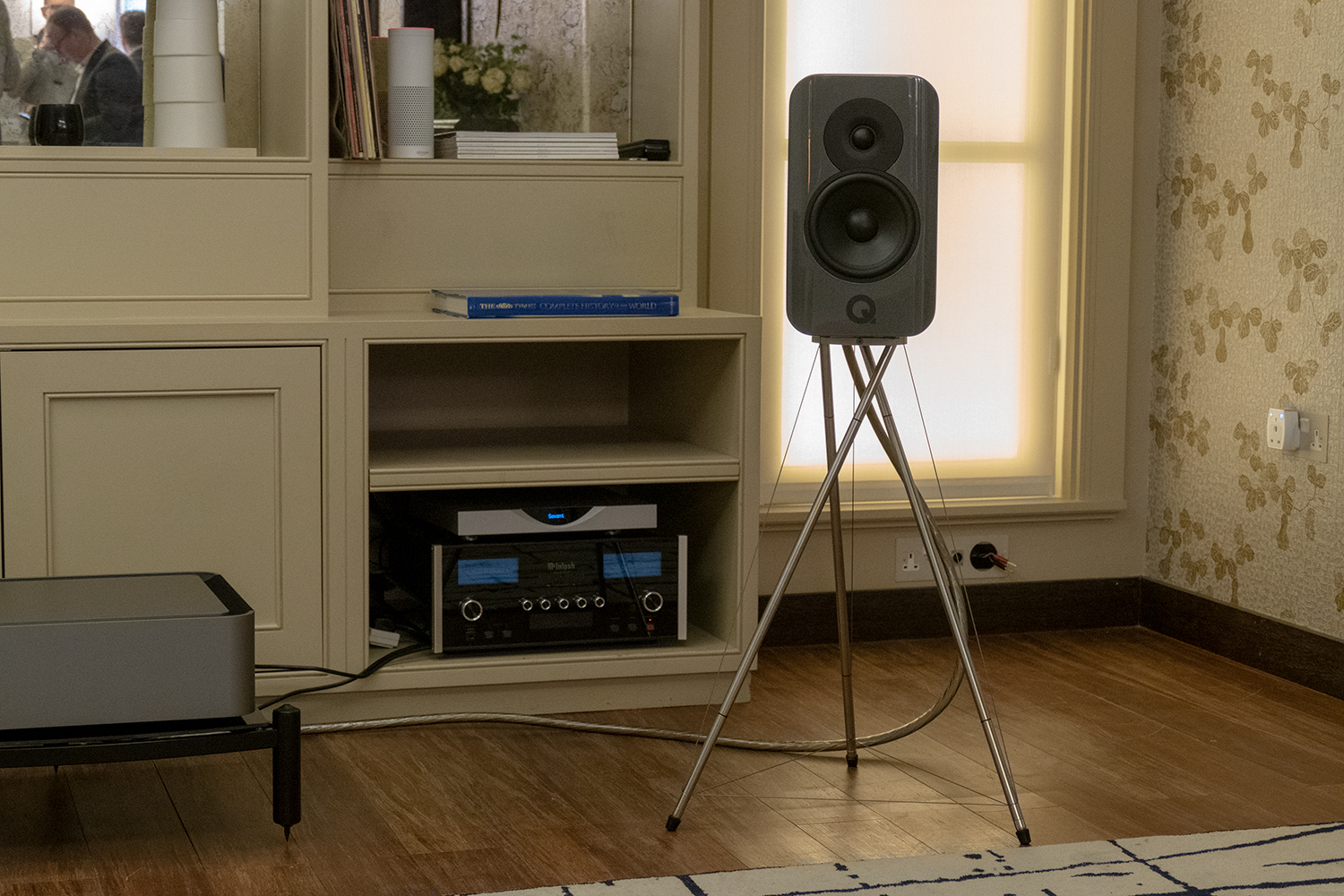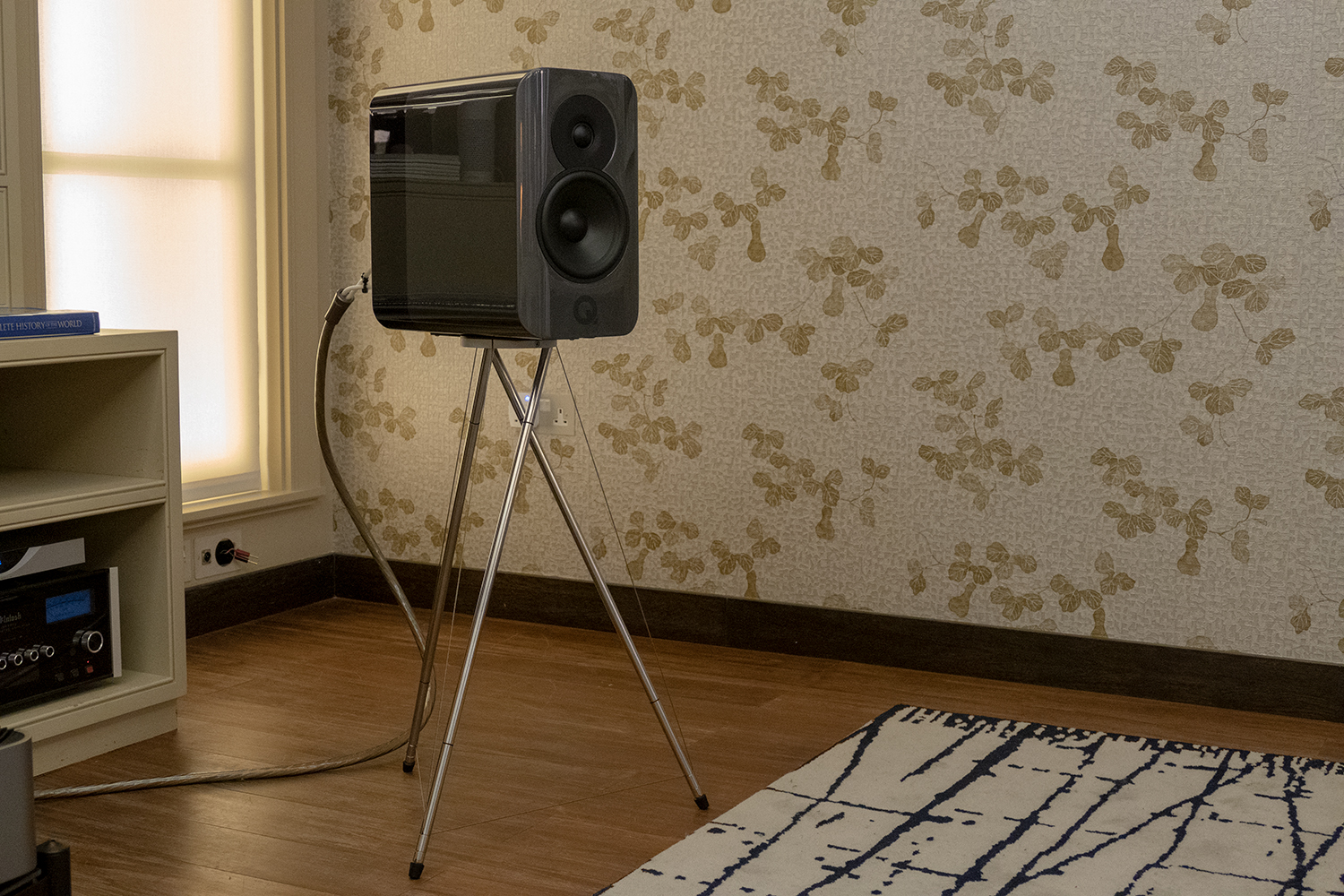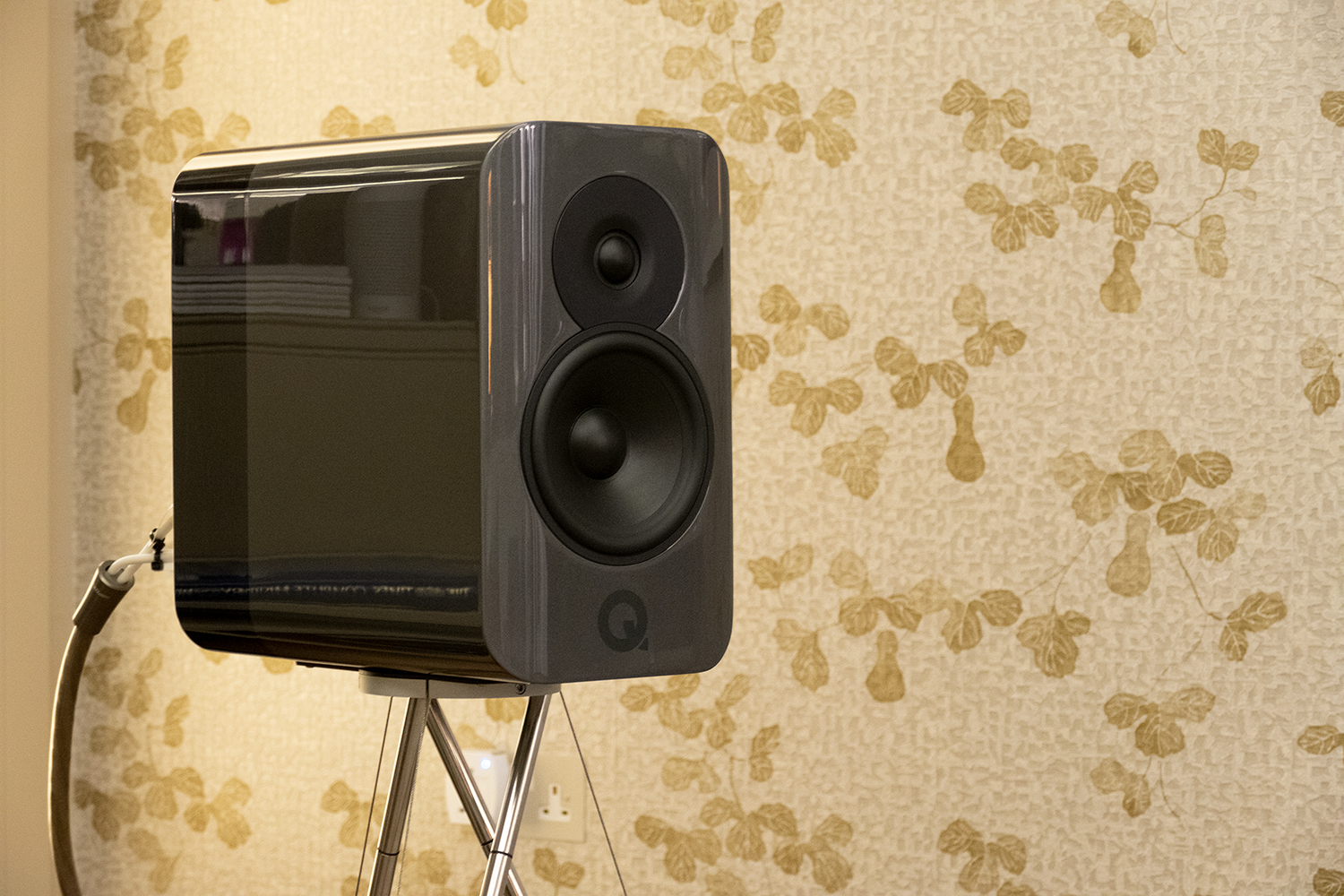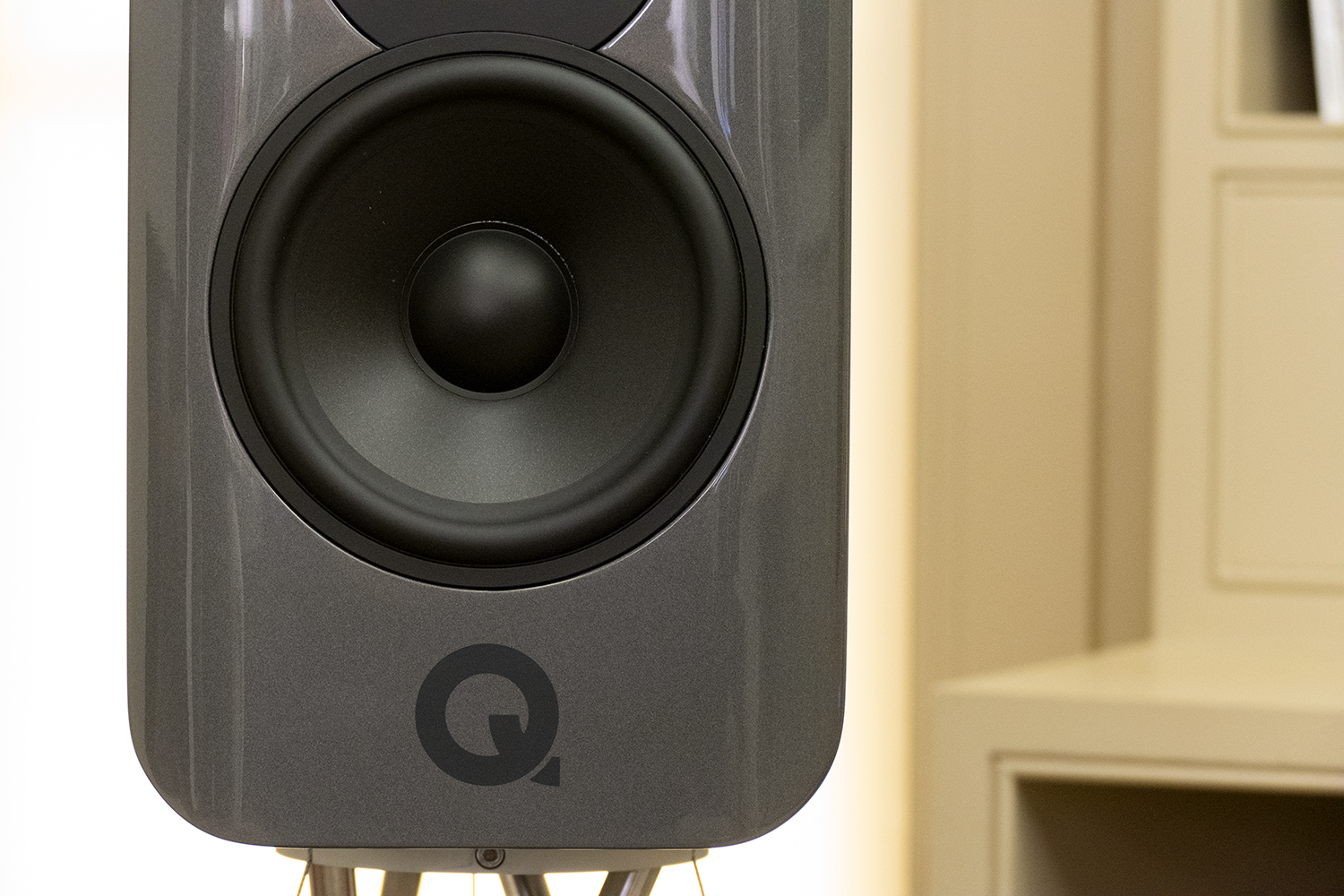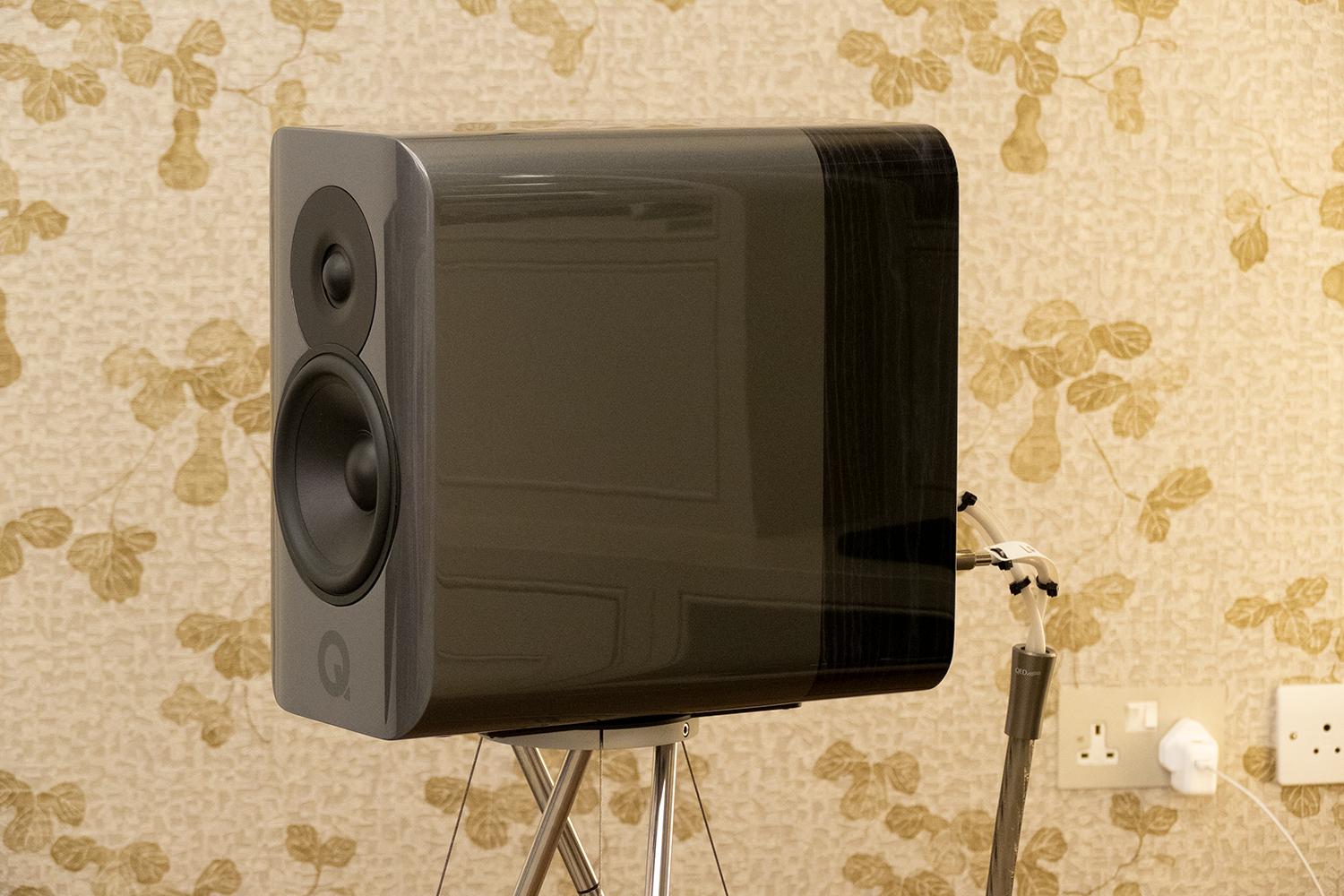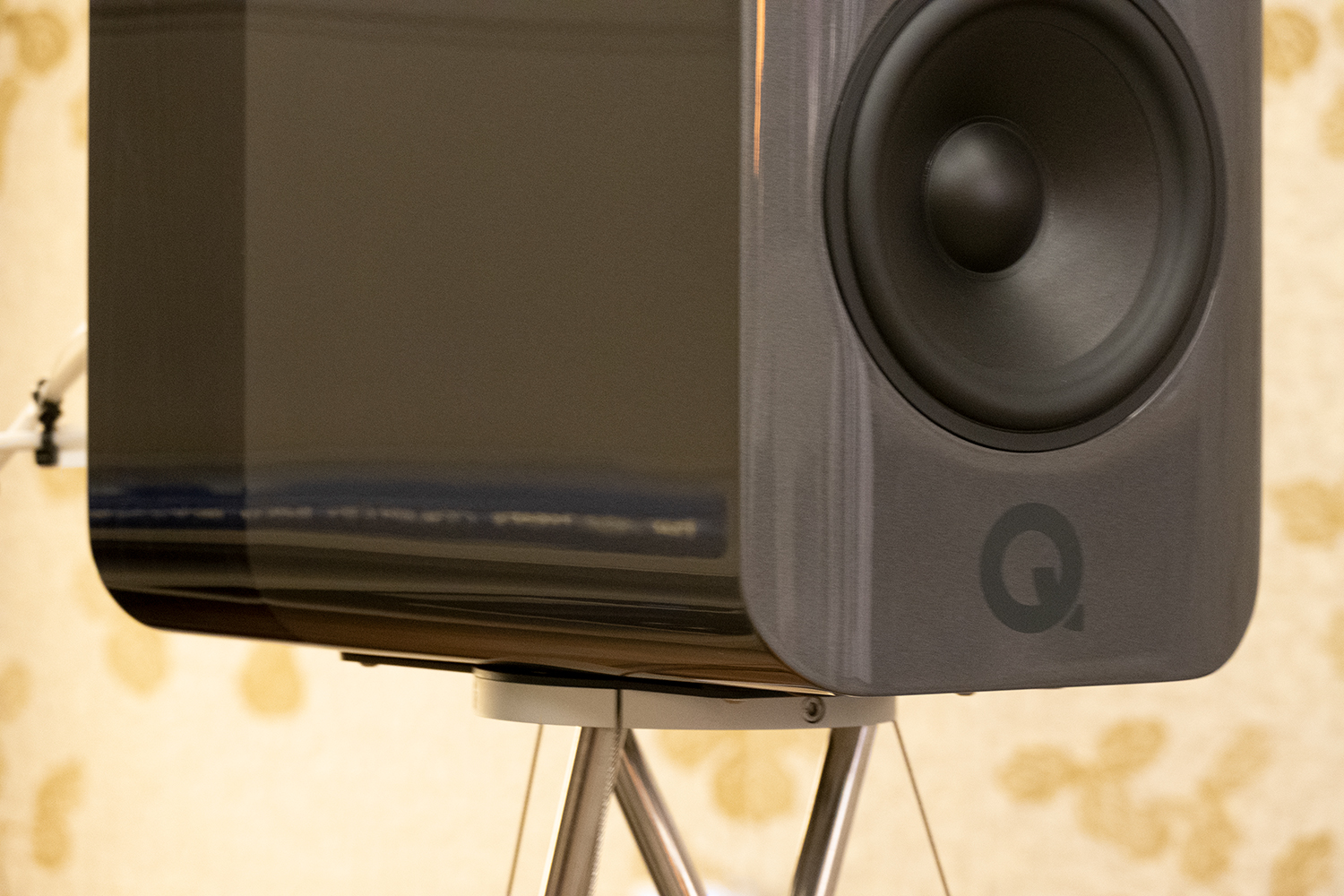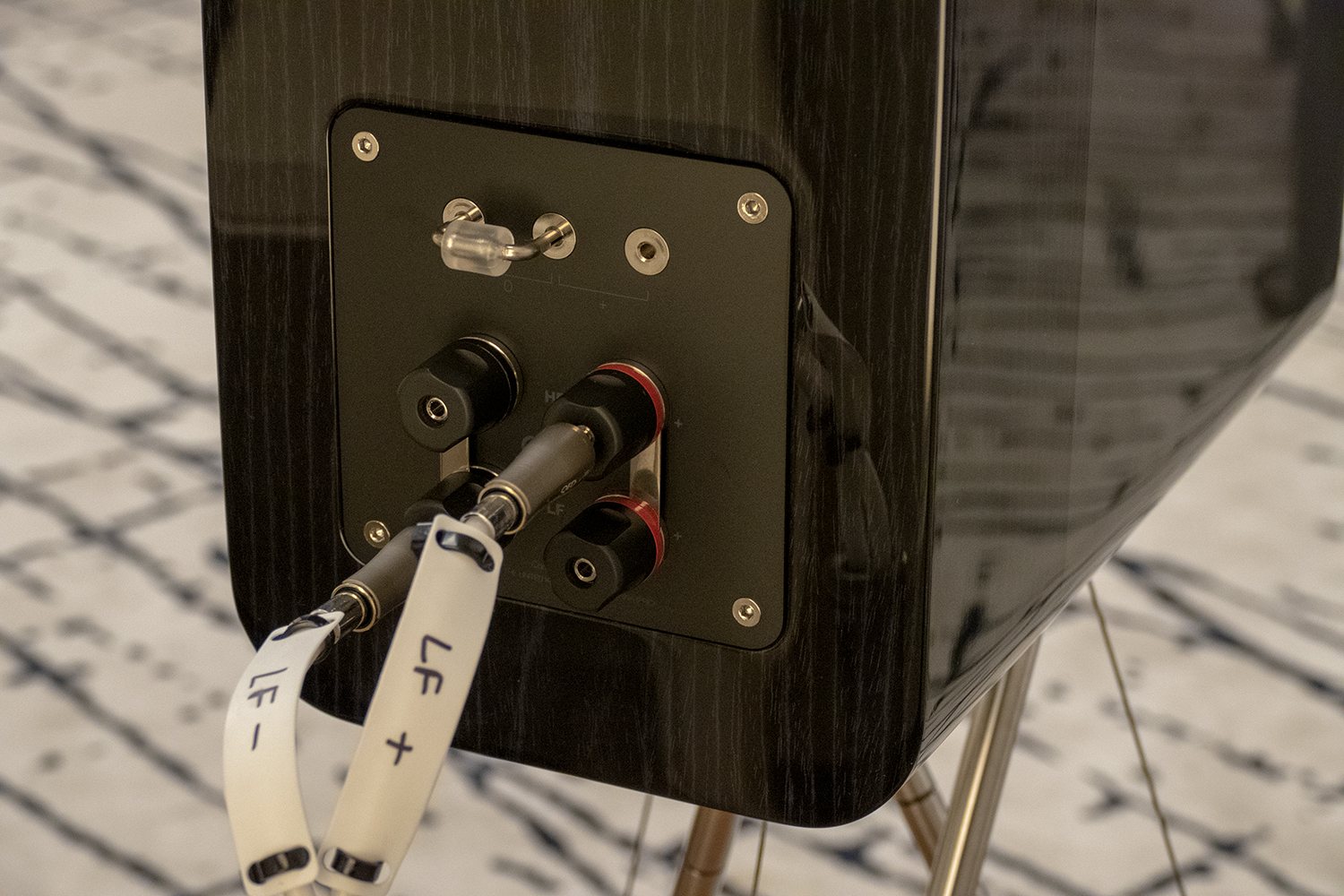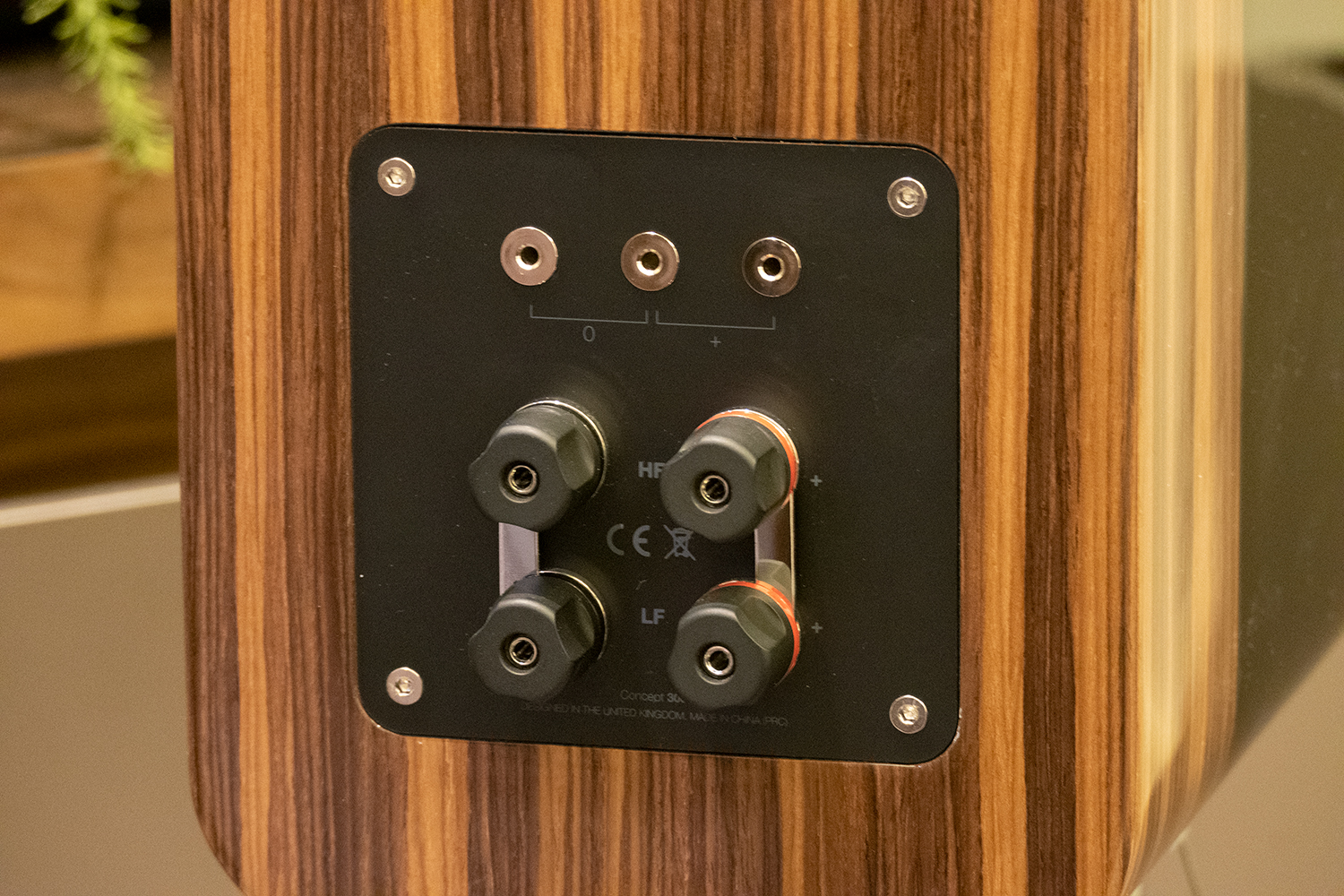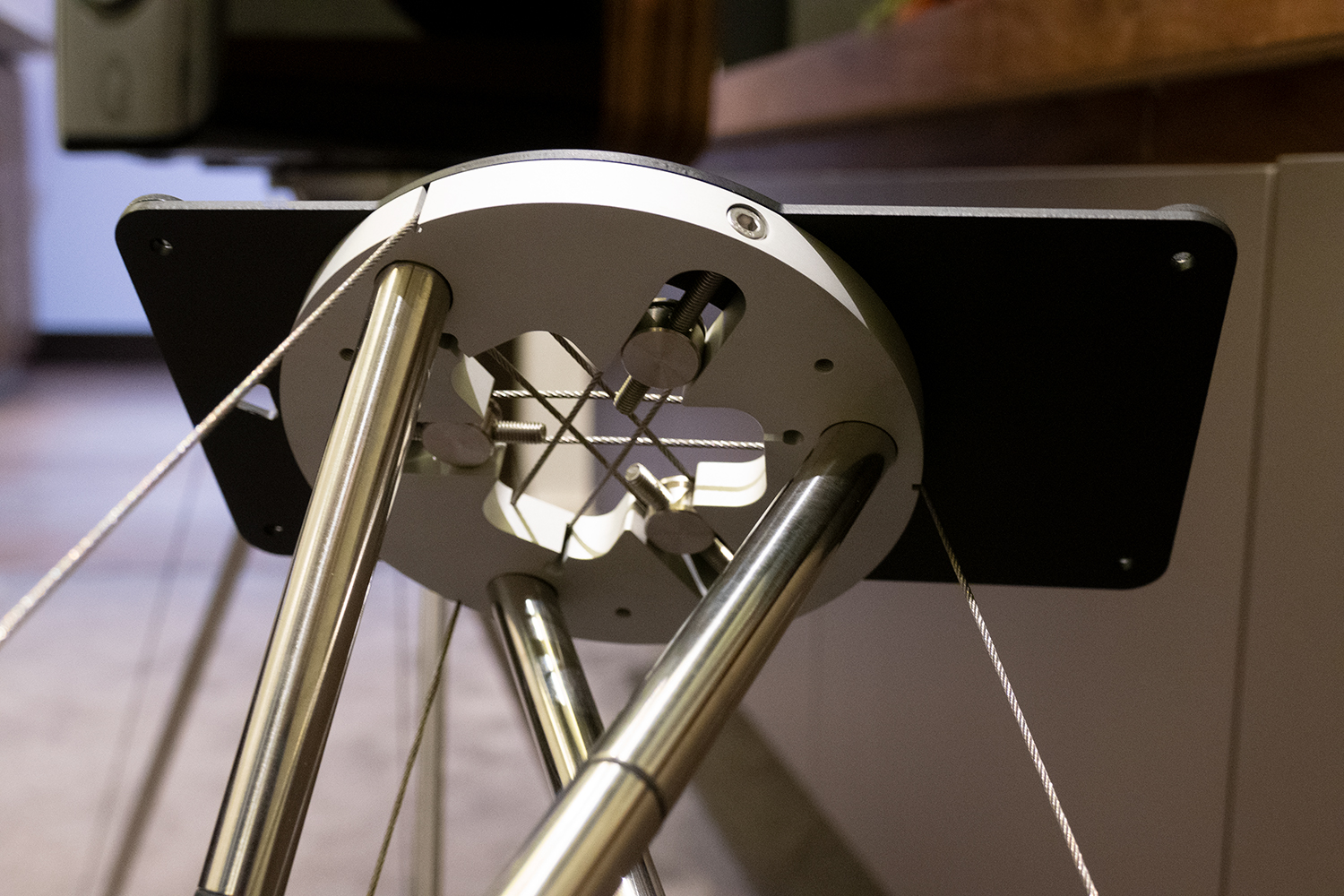Usually, the thing you expect to talk about most at the launch of a new pair of speakers is the speakers themselves; but after Q Acoustics revealed the Concept 300 speakers to Digital Trends and a selection of other journalists, we spoke to the team at length about the stand. Unusual-looking and eye-catching in a way that stands usually aren’t, they’re a bit special.
Before we go into them, let’s look at these beautiful speakers. It has been five years since Q Acoustics launched the Concept line, and most recently added the Concept 500 floorstanders to the range. The new Concept 300 may look like bookshelf-style speakers, but at 33 pounds you’d need a serious bookshelf to take the weight. Inside the stunning cabinets — check out the dual-finish real wood veneer, which is as classy as it gets in person — is a 6.5-inch mid-bass driver, and a 1.1-inch tweeter, both mounted using internal retaining bolts so nothing shows on the outside.
War on unwanted vibration
There is reason for the lack of bolts apart from a cleaner aesthetic, as it means the speakers don’t need a cover on the outside to hide the bolt heads. This is just a tiny part of Q Acoustics unerring mission to remove as many unwanted vibrations that affect sound quality as possible, and this is where the stand comes in. The Q Acoustics Tensegrity stand (named after the structural principle itself) is made up of three stainless steel tubes arranged in a tripod shape for maximum stability, and supported by steel cables to keep everything together.

This design was chosen after a brainstorming session on the best speaker stand the company could make, when one ironic answer was to isolate the speaker entirely and levitate it from the ground. Tensegrity’s tiny surface area helps remove the vibrations Q Acoustics had declared war upon. It’s then mated to an isolation base plate — essentially a suspension system for a speaker, rather than a car — made up of four springs attached to a plate made of Sylodamp, a polyurethane elastomer, that minimizes energy from the speakers going to the base and stand. It ends up transducing vibrations into heat, for improved bass response and a wider stereo image.
Has this been effective? A white paper on the Tensegrity stand shows how it compares to more traditional stands, and the heat maps show how sonically isolating the Tensegrity stand is, allowing the speakers to perform at their absolute best. It’s not just the stand and isolation plate either. The engineering team precisely laid out the internal bracing to resist cabinet wall movement, rather than randomly placing them for convenience or cost reasons, and then filled cavities with two layers of a non-setting gel, called Dual Gelcore, which like the isolation plate turns vibration into quickly dissipated heat.
Not an option
From an engineering point-of-view, this is all very geeky and exciting, but it’s really great to see the resulting system work from an aesthetic point-of-view as well. The Tensegrity stands look excellent, catching our attention in the same way as a complex, mathematically-precise suspension bridge does. The principle behind the Tensegrity stand has been around for decades, and even used to showcase innovative architectural art design in the 1950s.
Q Acoustics has put so much work into matching the speakers with their stands, to ensure the sound is the best it can be, the speakers and the stands are sold as a package. There’s no need to assemble anything, they come pre-built and tensioned, removing any chance of setting them up incorrectly. Q Acoustics is aware some purists may be disappointed at having a stand forced on them; but when they go together like this, to use them separately would be like splitting up twins at birth.
Warm sound you’ll want to share
All the talk of stands, isolation platforms, and a seemingly pathological hatred of vibrations meant listening to the Concept 300s had taken a back seat. We were in Cornflake, the London-based home automation and cinema experts, and the Concept 300s were set up in an authentic living room environment for our listening pleasure. The speakers were driven by Cambridge Audio’s Edge series power amp and pre-amp; but we were told the speakers don’t really need such serious firepower to drive them, with Q Acoustics recommending between 25 and 200 watts. However, with at least $10,000-worth of equipment in front of us, there was plenty of expectation.
Q Acoustics designed the Concept 300s to give a wide stereo image, so even those not sitting in the speaker’s sweet-spot could enjoy the sound. We sat off to one side and in the center of the listening room and found little difference between the two points. The sound is wonderfully natural, warm, and intimate. We’ve previously enjoyed how musical Q Acoustics speakers are, and it’s the same here. It’s like they want to play, and are sad when the music stops.

Listening was a pleasant, communal experience that we wanted to share. Even with more raucous songs, the speakers maintained composure, and never let the raucousness of the track become an unpleasant musical experience. The bass wasn’t so strong that it overpowered, but was always there in exactly the right amount, emphasizing the Concept 300’s warmth. The Cambridge Audio amps meant room-filling volume was never far away either.
What was interesting, and what we mean by a communal listening experience, was how rich and mellow the sound was presented at mid-volume. You could hold a conversation, and never feel the speakers were trying to make themselves known. Instead, they wanted to sing along and complement the conversation. They’re not speakers that will fade into the background though, not least because of the fabulous design and intriguingly-shaped Tensegrity stand: Whack the volume up, and they’ll make themselves known in a way that doesn’t tire.
Take a stand
Available in March 2019, the Concept 300 speakers will come in three color combinations, the classic gloss black and rosewood, a gloss white and oak, and the new and especially attractive silver and ebony. Matched with the stainless steel stand, all three look very special. To secure a set you’ll need $4,500 or 3,000 British pounds, which is not far off the price of the $6,000 Concept 500 floorstanders. The company expects room decor and available space in your home to influence the buying decision.
We’ll add something to this, as probably for the first time ever, we’d actually expect the stand to play a part in any buying decision too; the Concept 300’s Tensegrity stands are as much a part of the speakers’ appeal as the delightful sound.
